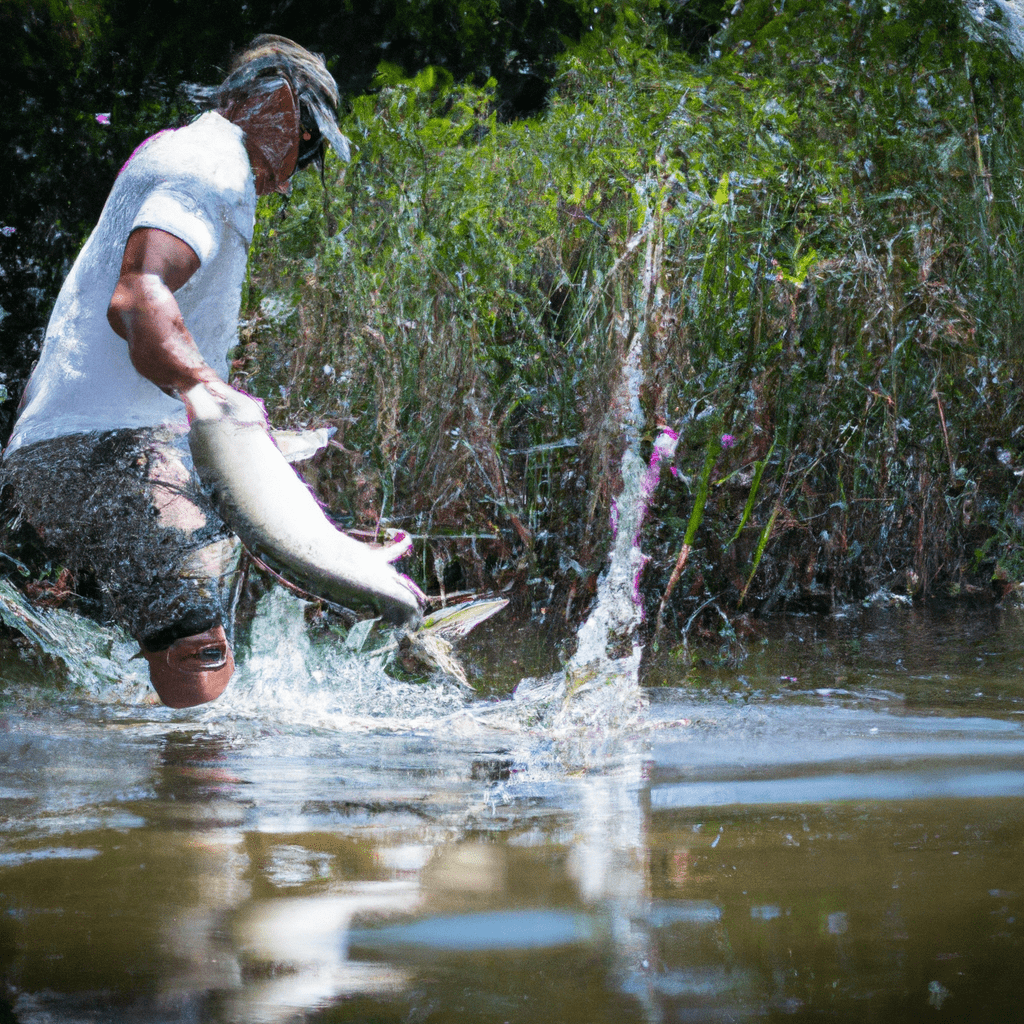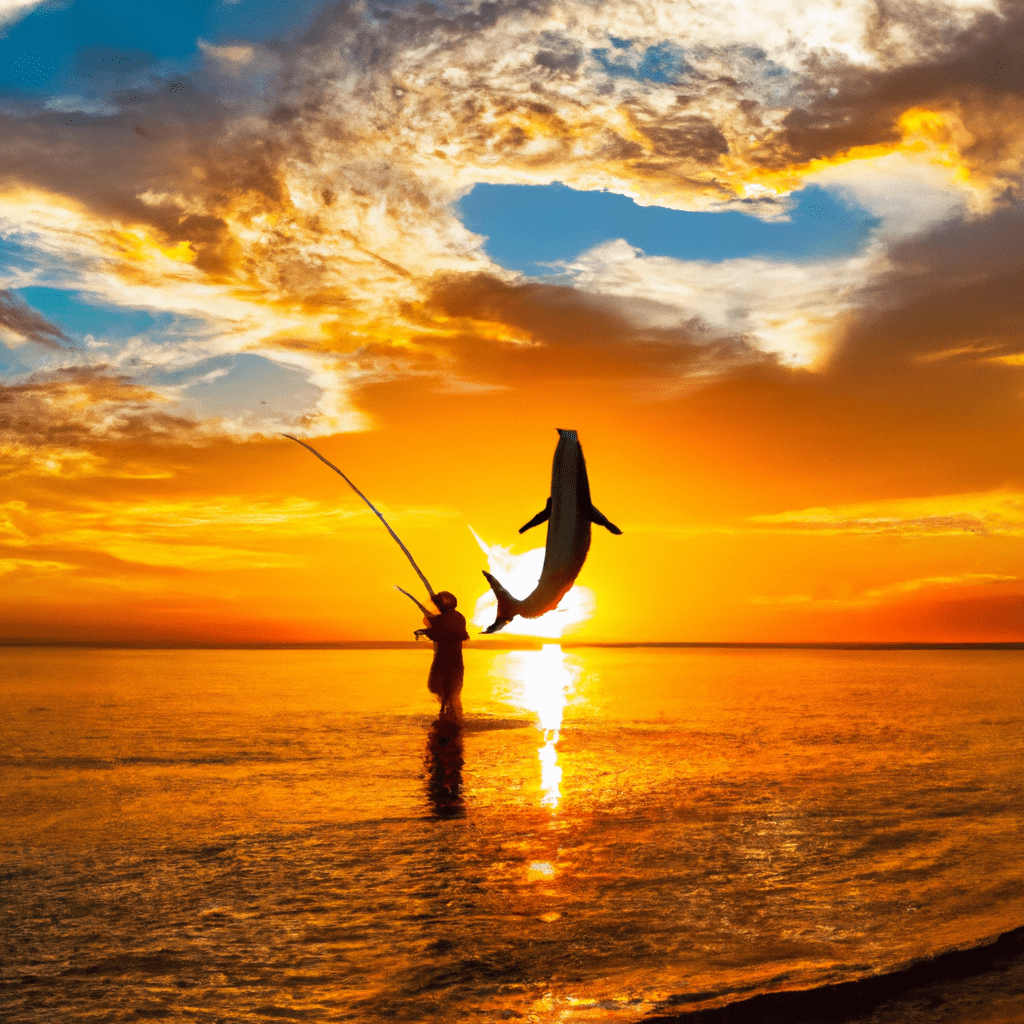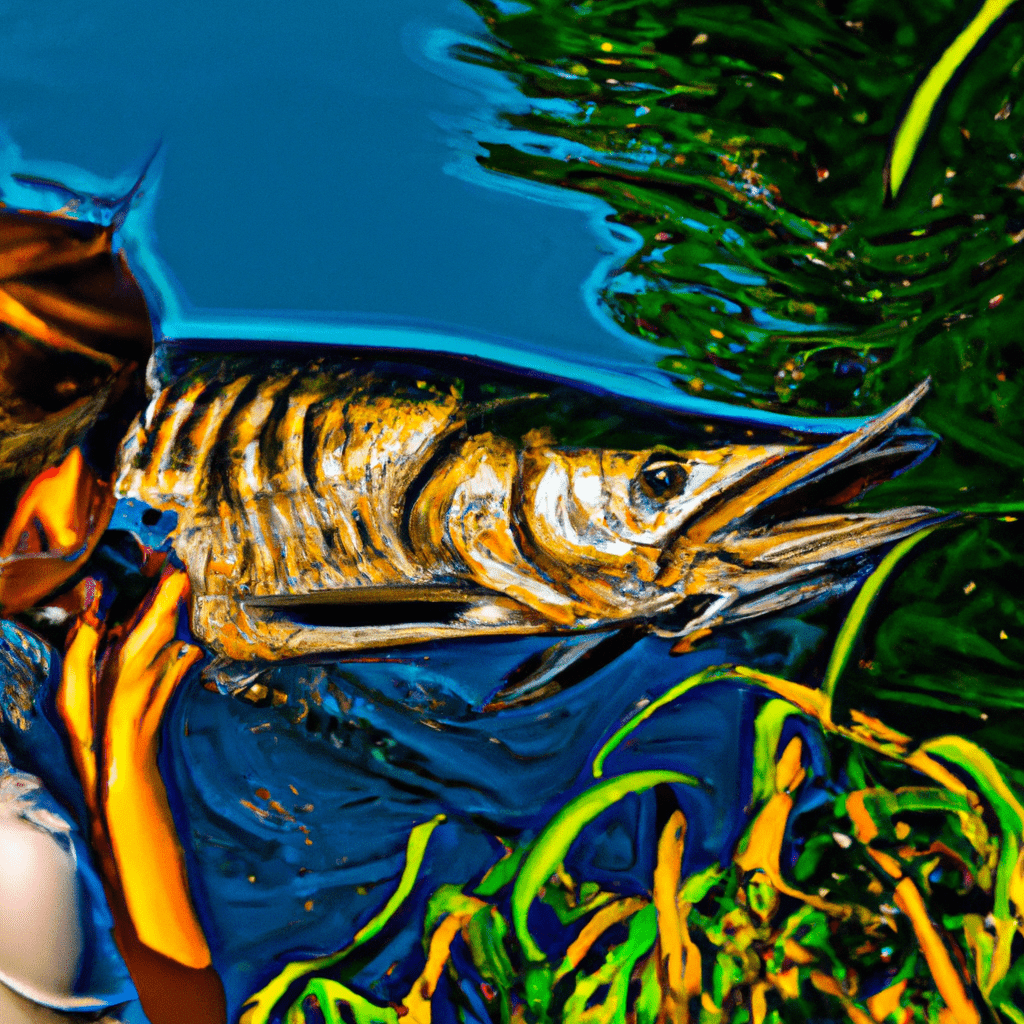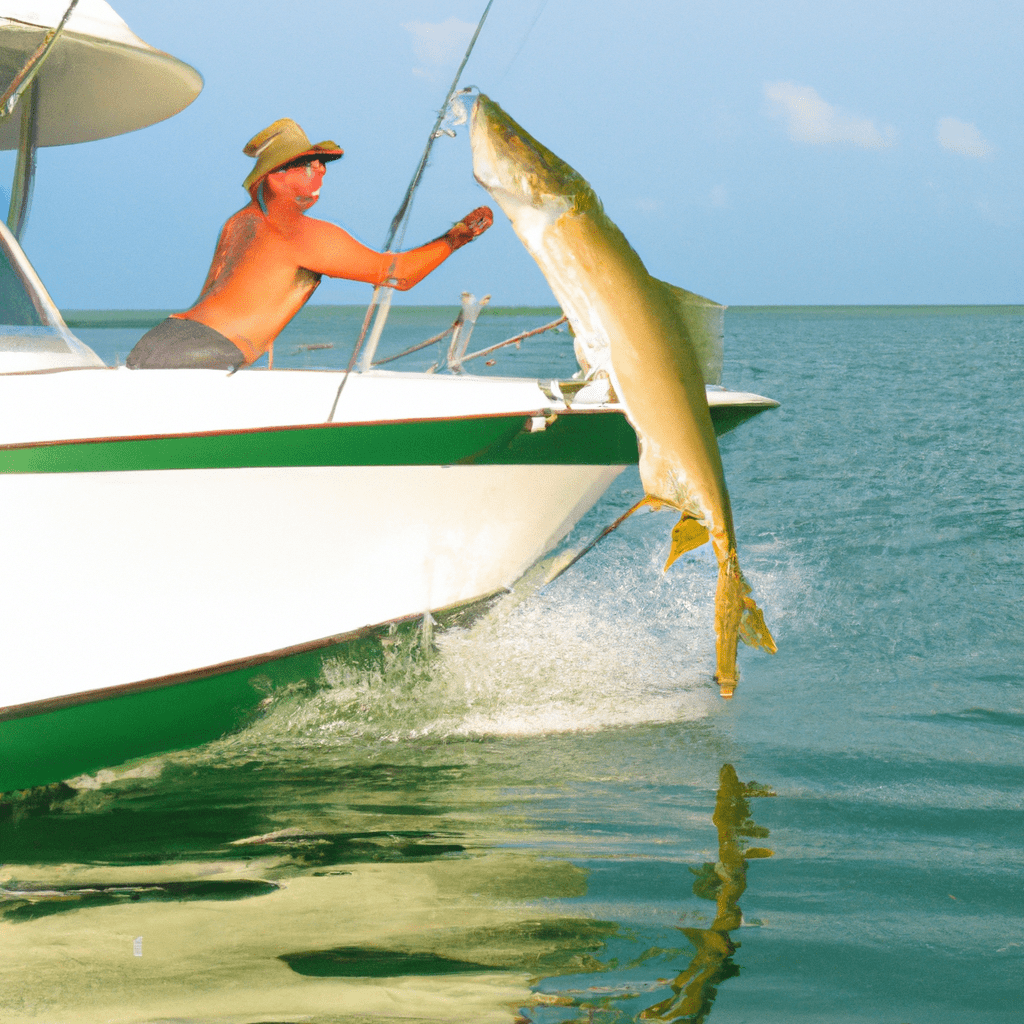Imagine yourself on a boat, surrounded by the vast expanse of the ocean. You cast your line, feeling the thrill of anticipation as you wait for a powerful tug.
Welcome to the world of tarpon fishing, where art and science converge. In this article, we will delve into the behavior, techniques, biology, and environmental factors that shape the elusive tarpon’s behavior.
Get ready to unlock the secrets behind the art and science of tarpon fishing.
- The Behavior of Tarpon: Understanding Their Movements and Patterns
- Techniques and Tactics: Mastering the Skills to Hook and Land Tarpon
- Bait and Lure Presentation: The Art of Tempting Tarpon
- The Biology and Physiology of Tarpon: Unlocking the Secrets of Their Strength and Stamina
- Environmental Factors: How Weather, Tides, and Habitat Influence Tarpon Behavior
- Frequently Asked Questions
The Behavior of Tarpon: Understanding Their Movements and Patterns

When you’re tarpon fishing, it’s important to understand their movements and patterns. Tarpon are migratory fish that undertake long-distance journeys, often spanning thousands of miles. Understanding their migration patterns is crucial for successful fishing.
Tarpon typically migrate between different habitats, such as coastal waters, estuaries, and rivers, in search of optimal conditions for feeding and reproduction. They’re known to have a preference for warm waters, and their migration patterns are heavily influenced by factors like water temperature and availability of prey.
In terms of feeding habits, tarpon are opportunistic predators that primarily consume fish, crustaceans, and occasionally even birds. They’ve a unique ability to gulp air at the surface, which allows them to survive in oxygen-depleted environments.
Techniques and Tactics: Mastering the Skills to Hook and Land Tarpon

To master the skills to hook and land tarpon, you must learn various techniques and tactics. Here are some key strategies to consider:
- Mastering Casting Techniques: Tarpon fishing requires precise casting skills. Practice your accuracy and distance to effectively present your bait or lure to the tarpon.
- Choosing the Right Tackle: Selecting the appropriate tackle is crucial when targeting tarpon. Opt for strong and durable fishing rods, reels, and lines that can handle the powerful runs and jumps of these mighty fish.
- Understanding Tarpon Behavior: Study the feeding habits and movement patterns of tarpon. Knowing when and where they’re likely to be will increase your chances of success.
- Using Live Bait: Live bait such as mullet or crabs can be irresistible to tarpon. Learn how to rig and present live bait effectively to entice these fish to bite.
- Employing Artificial Lures: Artificial lures can also be effective in attracting tarpon. Experiment with different types, sizes, and colors to find what works best in different conditions.
Bait and Lure Presentation: The Art of Tempting Tarpon

Master the art of tempting tarpon by skillfully presenting your bait or lure.
Tarpon fishing strategies revolve around choosing the right bait and lure to entice these powerful fish.
When it comes to bait, live options such as mullet, crabs, and shrimp are popular choices. These baits mimic the natural prey of tarpon and are effective in attracting their attention.
Lures, on the other hand, come in various shapes and sizes, including soft plastic swimbaits, jerkbaits, and topwater plugs. It’s important to consider the water conditions and the behavior of the tarpon when selecting a lure. Experimenting with different colors and movements can help find the perfect match.
Ultimately, the key to successful bait and lure presentation lies in understanding the preferences and feeding habits of tarpon.
The Biology and Physiology of Tarpon: Unlocking the Secrets of Their Strength and Stamina

You can uncover the secrets of their strength and stamina by exploring the biology and physiology of tarpon. These majestic fish possess unique characteristics that enable them to undertake incredible feats, such as their long-distance migration and their ability to battle against powerful currents.
Here are some interesting facts about the biology and physiology of tarpon:
- Tarpon have a specialized respiratory system that allows them to gulp air at the surface, enabling them to survive in low-oxygen environments.
- Their skeletal structure is built for strength and flexibility, with a series of hard, bony plates called scutes that provide protection and support.
- Tarpon possess a keen sense of hearing, allowing them to detect prey and potential threats in their environment.
- They’ve a varied diet, feeding on smaller fish, crustaceans, and even birds.
- Tarpon migration patterns are influenced by factors such as water temperature and availability of food.
Understanding the biology and physiology of tarpon is essential for conservation efforts and can aid in the development of sustainable fishing practices.
Environmental Factors: How Weather, Tides, and Habitat Influence Tarpon Behavior

When planning your tarpon fishing expedition, take into account how weather, tides, and habitat can influence tarpon behavior.
Weather effects play a significant role in tarpon fishing. Tarpon tend to be more active and feed more aggressively during overcast or cloudy conditions. They’re also more likely to stay near the surface in search of prey during periods of calm weather.
Additionally, tidal patterns are crucial for successful tarpon fishing. Tarpon prefer to feed during incoming tides when there’s a higher concentration of baitfish. They use the tidal current to their advantage, positioning themselves strategically to ambush their prey.
Understanding the habitat is also essential. Tarpon are commonly found in coastal waters, estuaries, and nearshore environments. Knowing their preferred habitats will increase your chances of locating and catching these magnificent fish.
Frequently Asked Questions
What Types of Equipment and Gear Are Recommended for Tarpon Fishing?
When tarpon fishing, it’s important to have the right equipment. Recommended gear includes a sturdy rod and reel, heavy fishing line, and strong hooks. The best bait for tarpon fishing is typically live or dead fish.
Are There Any Specific Techniques or Strategies for Targeting Larger, Trophy-Sized Tarpon?
To target larger, trophy-sized tarpon, utilize specific techniques and strategies. Success stories from experienced anglers indicate that finding the best locations, using live bait or artificial lures, and mastering the art of casting are key factors for success.
Can You Provide Any Tips on How to Properly Handle and Release Tarpon to Ensure Their Survival?
When handling tarpon, it’s crucial to follow proper techniques to ensure their survival. Implement catch and release practices, using wet hands or gloves, supporting their weight horizontally, and minimizing air exposure.
Are There Any Specific Regulations or Restrictions Regarding Tarpon Fishing in Certain Areas?
In certain areas, there are regulations and restrictions governing tarpon fishing. These rules aim to protect the population and ensure sustainable practices. Climate change also poses a threat to tarpon populations, necessitating careful management and conservation efforts.
How Long Do Tarpon Typically Migrate and What Are Their Primary Migration Routes?
Tarpon migration patterns vary, but they typically migrate for several months each year. Factors like temperature, food availability, and reproduction influence their migration. Primary migration routes are determined by these factors and environmental conditions.

